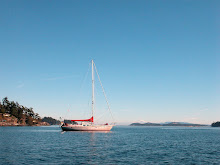
The island of Prince Karls Forland is one of the few places in Svalbard were you are almost guaranteed to see walruses and our visit was no exception; a whole herd of male walruses were hauled out on the beach digesting their latest catch. We anchored just of the beach, as they did not seem bothered by our presence.
Their relaxed mood continued during our shore visit though their meter long tusks and their ability to suddenly move at a remarkably fast pace, discouraged us from getting too close. As we walked near the heard it was easy to see how these trusting creatures became sitting targets for hunters who valued their tusks and tough skin, which were used for conveyor belts. After being hunted nearly to extinction, the walrus population has begun to recover and is starting to return to their former haul outs. However, they still have a long way to go before they become a common sight and have to overcome new challenges including climate change and pollution.
Though walruses are not beautiful in the traditional sense and their shellfish diet does give them a unique smell, they are both endearing and mysterious. Watching their interaction with each other was an amazing display of respect as they harmoniously napped almost on top of each other and occasionally scratch each others' backs. While little is know about their habits, life expectancy or even why they have tusks, just watching them gives the impression that they are wise and kind creatures.







